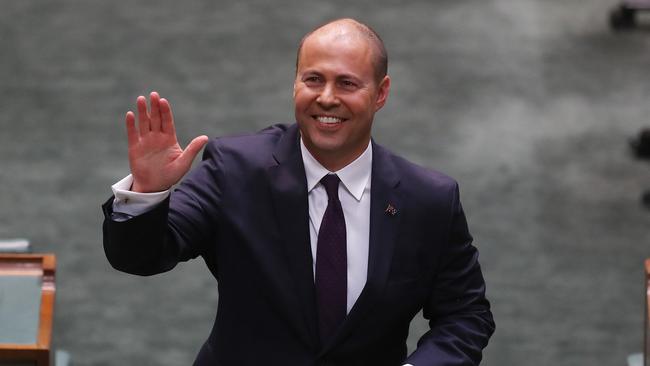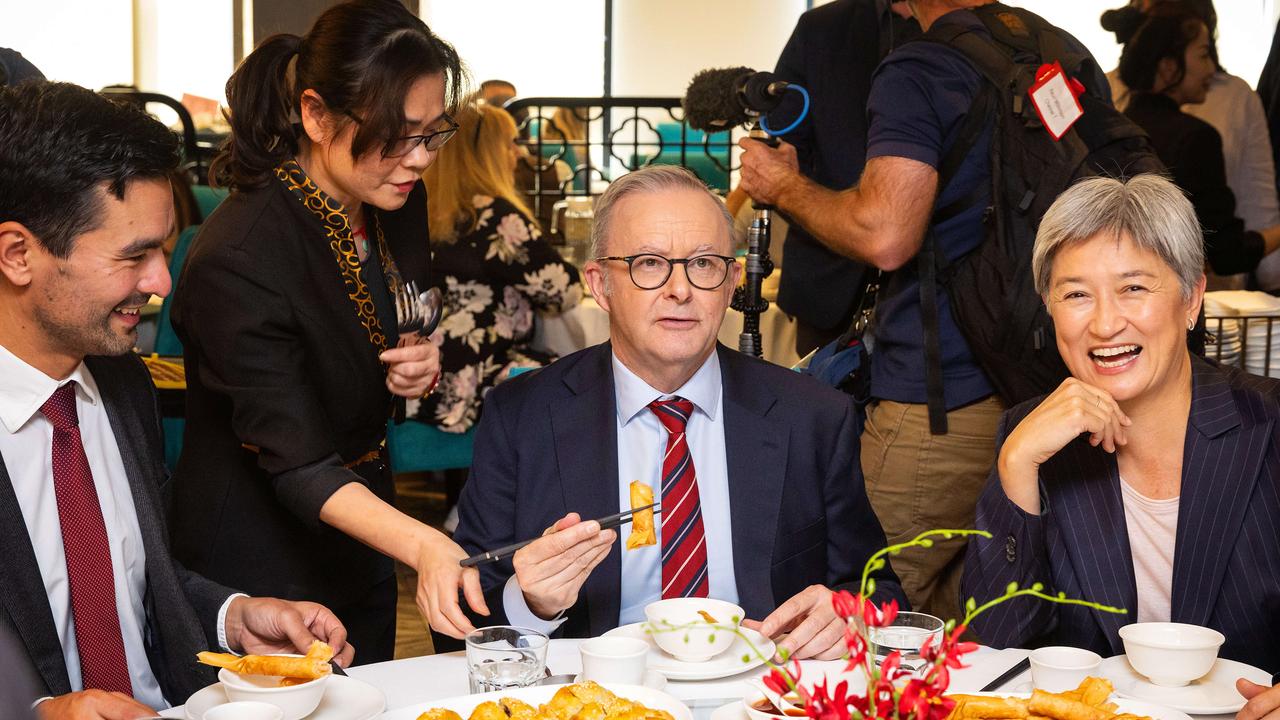Blueprint for winning an election
Among the billions in spending in the budget is a carefully targeted plan to win back Coalition voters.

Call it a “kiss and ride” re-election manifesto.
Among the billions in spending in last night’s budget is a carefully targeted plan to win back a wavering tribe of Coalition voters: outer-suburban and regional workers who travel long distances, who battle to make ends meet, who worry about their kids’ prospects and what will happen to their parents.
Think seats such as Dunkley and Corangamite in outer metropolitan and regional Victoria, Lindsay, Dobell and Robertson in Sydney’s outer reaches and Longman, north of Brisbane.
Last night’s election budget is full of irritation-busting or tightly targeted initiatives in the sorts of areas that will give voters a close-to-home and readily identifiable reason to vote for Scott Morrison.
A $500 million car park initiative for commuters around the country, aimed at making the park-and-ride experience more palatable, was announced last night. There is fast rail to Geelong worth $2 billion. Road projects worth billions have been funded all over the country. This is on top of a tax cut of up to $1080 for workers earning between $48,000 and $90,000, which tapers until earnings of $126,000, and an expansion of the instant asset write-off for business from $25,000 to $30,000.
There are also 80,000 apprenticeships for young workers with incentives for both employers to hire and apprentices to sign on. And there is a major upgrade to home help that will help keep the elderly in their homes.
It might be the national stage, but the age-old adage remains: all politics is still local. The fine print of last night’s budget is a detailed micro-campaign to take the fight to Labor in the outer suburbs and regional towns that contain the marginal seats that will decide the election expected next month. This gives the Prime Minister a powerful campaign pitch to voters who flocked to Kevin Rudd in 2007, back to Tony Abbott in 2013, and away from Malcolm Turnbull in 2016.
For his first budget, Josh Frydenberg appears to have learned one of the lessons of Daniel Andrews’s victory in the state election last November. Labor’s rollout of level rail crossings across its term was credited as one of the factors that pushed voters to stick with the Andrews government.
In Victoria, where federal Labor’s hopes are high and the Liberals are worried, the $2bn Geelong fast-rail initiative will go well in Corangamite, centred around the regional city and held by the Liberals’ Sarah Henderson. It is a problematic seat for the Coalition as it became notionally Labor after a redistribution.
The $184m package to support tourism infrastructure and operators on the Great Ocean Road and in Geelong will also be a Coalition selling point in Corangamite next month. Studies of fast-rail services to towns such as Shepparton will give the Liberals something to sell in Indi, which fell to independent Cathy McGowen in 2013 and which the government needs back.
Seats such as Flinders on Melbourne’s fringes, held by Greg Hunt, and the commuter-belt seat of Dunkley, which is notionally Labor after a redistribution, will be receptive areas for the commuter carparks initiative. So too will centres such as Penrith in Sydney’s west, in the marginal seat of Lindsay, which drifted away from Mr Turnbull in 2016 and is now held by Labor by 1.11 per cent.
To the north, on the NSW central coast, another major commuter belt, $30m has been allocated to upgrade the commuter car park at Gosford and $5m for Woy Woy. The move is likely to be popular in Dobell, held by Labor’s Emma McBride by 4.81 per cent, and in Robertson, held by Liberal Lucy Wicks by 1.14 per cent.
The commuter car parks, the tax cuts and the instant asset write-off are measures that will go well with tradies and commuters in a seat such as Longman, north of Brisbane, which also drifted away from Mr Turnbull in 2016 and again last year in the by-election that blighted the former prime minister’s leadership. The margin has blown out to 4.45 per cent but the absence of a Liberal candidate who became embroiled in a fake medal controversy will improve the Coalition’s chances.
Dickson, held by Home Affairs Minister Peter Dutton by just 1.7 per cent, and Liberal-held Petrie (1.65 per cent) are also commuter-belt suburbs that will welcome the initiatives.
Further up the coast, the popular North Queensland Cowboys score $15m for a community training and high-performance centre in Townsville. It is centred on the seat of Herbert, Labor’s most marginal seat on a wafer-thin 0.02 per cent. Townsville will also be first cab off the rank for a funding upgrade for regional hospitals.
In Tasmania, the government has announced a $530m city deal including money for social housing, $25m to reduce congestion on arterial roads, and an expansion of the provision of border services at the Hobart International Airport. A happy Hobart could help the Coalition in Labor-held Bass.


